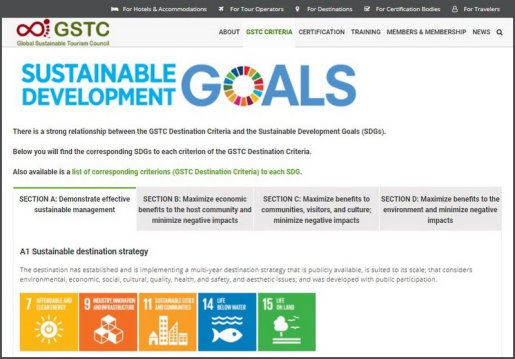
2008年10月6日,在巴塞隆納舉辦的國際保育聯盟(International Union for Conservation of Nature, IUCN)的「世界自然保育大會(World Conservation Congress)」上, 聯合國基金會(United Nations Foundation) 的創辦人暨主席Ted Turner,與雨林聯盟(Rainforest Alliance)、聯合國環境規劃署(United Nations Environment Programme, UNEP)和聯合國世界旅遊組織(the United Nations World Tourism Organization, UNWTO)等四個組織,籌組由 27 個非政府組織和商業組織組成了「全球永續旅遊準則夥伴關係(Partnership for Global Sustainable Tourism Criteria)」,後來改稱「全球永續旅遊委員會」(我之前譯為「全球永續旅遊聯盟」,現依該組織官方中文名稱)(Global Sustainable Tourism Council, GSTC),並發表了 「全球永續旅遊準則(Global Sustainable Tourism Criteria) 」,分為旅遊地( GSTC Destination Criteria)與產業(GSTC Industry Criteria)二種,其中產業類別再分為旅宿業(hotels)及旅遊業者(tour operators)二種。
目前旅遊地準則還是2013年11月1日發布的第一版,產業類準則則於2016年12月21日發布第三版旅宿業準則與旅遊業者準則。(中文正體與簡體版本請點此下載:https://www.gstcouncil.org/gstc-criteria/criteria-translations/)
永續(可持續)旅遊(Sustainable Tourism) 是從永續發展(Sustainable Development)的概念引伸出來的旅遊業發展原則和理念,是永續思想與旅遊業的有機結合,適用於所有能夠在長期發展過程中與自然、社會、文化環境和諧共存與協調發展的旅遊形式。(鍾林生等,2003,生態旅遊規劃原理與方法,北京化學工業出版社,P8-9)
而聯合國於2016年1月1日啟動的永續發展目標議程(Agenda 30)中有2030永續新禧年17項永續發展目標(Sustainable Development Goals, 簡稱SDGs),依著要達到這些目標而採取的策略與行動應該就是永續旅遊要遵守及實踐的。
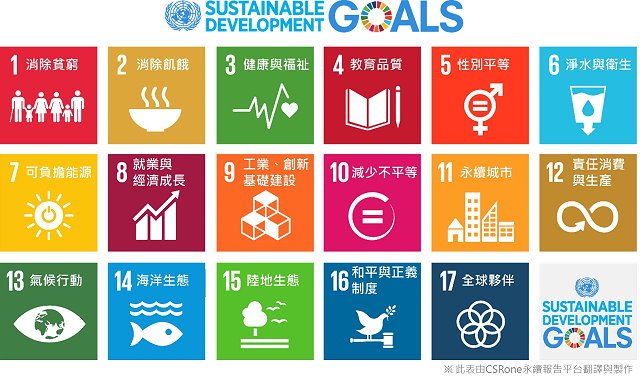
因此,全球永續旅遊委員會在日前發布全球永續旅遊準則-旅遊地篇與17項永續發展目標之對應(corresponding SDGs to GSTC Destination Criteria),讓業者清楚知道履行這些準則也能促進永續發展目標的達成。
我將全球永續旅遊委員會官方中文正體版本的旅遊地準則中英對照以及每一準則對應到的永續發展目標圖示張貼如下,請參考。
Global Sustainable Tourism Council
Global Sustainable Tourism Criteria
for Destinations (GSTC‐D)
全球永續旅遊目的地準則(GSTC-D)
version 1.0 1 November 2013
1.0 版 2013 年11 月1 日
Translated by: The Globe Ecotourism Training Centre
翻譯本: 環球生態旅遊培訓中心 – www.getcentre.cn
序 言
永續旅遊正在興起:旅遊者的需求不斷增長,旅遊經營者在開發新的綠色產品,各國政府與國際機構在制定新的政策以鼓勵永續旅遊實踐。然而,「永續旅遊」的真正含意是什麼?從獲得旅遊者信任、促進旅遊業繁榮、帶動社區發展以及避免「永續旅遊」標籤被不當利用的角度出發,我們該尋求怎樣的一種可信的界定方法與正確的評價依據呢?
對旅遊目的地而言,全球永續旅遊準則是對永續發展所達成共識的結果。對於任何致力於實現永續旅遊的管理組織來說,這些準則都應當成為其力求達到的基礎標準。
為實現永續旅遊,目的地應採取跨學科領域、綜合的方法來實現以下四個目標:(一)目的地永續營運管理;(二)當地社區經濟利益最大化與負面影響最小化;(三)社區特色性保護、遊客體驗、文化傳承效益最大化與負面影響最小化;(四)環境效益最大化與負面影響最小化。
上述準則適用於各種不同類型與規模的旅遊目的地。
全球永續旅遊準則是旅遊業界回應聯合國應對全球挑戰所作出的「千年發展目標」(MDG)的一部分,重在解決貧窮、性別平等、包括氣候變化在內的環境永續發展等跨領域的問題。
全球永續旅遊準則及其指標是在國際社會公認的標準與方法的基礎上所制定,主要包括:聯合國世界旅遊組織(UNWTO)針對旅遊目的地制訂的指標、全球永續旅遊委員會(GSTC)針對旅遊業者與旅宿業永續發展制訂的指南,以及其它被廣泛認可的原則、準則、認證標準與指標。它們反映了來自不同文化與地緣政治的世界各地旅遊業與其它部門適用的認證準則、指標、標準與最佳實踐。其潛在指標具有針對性、實用性與普適性。
全球永續旅遊委員會(GSTC)負責起草制訂和實施全球永續旅遊準則。該準則的預期用途包括以下幾方面:
l 為致力於永續發展的旅遊目的地提供基本指南;
l 幫助消費者識別名實相副的永續旅遊目的地;
l 成為資訊媒體識別永續旅遊目的地並向公眾推廣的共同基準;
l 為認證以及目的地相關項目提供參考依據,使其符合永續旅遊的基本原則與要求;
l 為政府部門、非政府組織、旅遊業者提供永續旅遊發展的基本框架;
l 作為旅遊院校等機構教育培訓的基本指導方針。
全球永續旅遊準則僅指出了應該做什麼,而未表明要如何去做或者目標是否已經實現。這些都需要公眾、非政府組織、旅遊業者等提供的指標呈現、相關教育材料與實施細則來實現。而這一切也正是實踐全球永續旅遊目的地準則(GSTC‐D)不可或缺的補充。
全球永續旅遊目的地準則(GSTC‐D)是整個旅遊業實現永續發展進程的起點。
Preamble
Sustainable tourism is on the rise: consumer demand is growing, travel industry suppliers are developing new green programs, governments and international agencies are creating new policies to encourage sustainable practices in tourism. But what does “sustainable tourism” really mean? How can it be measured and credibly demonstrated, in order to build consumer confidence, promote business prosperity, foster community benefits, and fight false claims?
The Global Sustainable Tourism Criteria are an effort to come to a common understanding of sustainable destinations, and are the minimum undertakings that any tourism management organization which wishes to be sustainable should aspire to reach. To satisfy the definition of sustainable tourism, destinations must take an interdisciplinary, holistic and integrative approach which includes four main objectives: to (i) demonstrate sustainable destination management; (ii) maximize social and economic benefits for the host community and minimize negative impacts; (iii) maximize benefits to communities, visitors and cultural heritage and minimize impacts; and (iv) maximize benefits to the environment and minimize negative impacts. The criteria are designed to be used by all types and scales of destinations.
The criteria are part of the response of the tourism community to the global challenges of the United Nations’ Millennium Development Goals. Poverty alleviation, gender equity and
environmental sustainability, including climate change, are the main cross‐cutting issues that are addressed through the criteria.
The criteria and indicators were developed based on already recognized criteria and approaches including, for example, the UNWTO destination level indicators, GSTC Criteria for Hotels and
Tour Operators, and other widely accepted principles and guidelines, certification criteria and indicators. They reflect certification standards, indicators, criteria, and best practices from
different cultural and geo‐political contexts around the world in tourism and other sectors where applicable. Potential indicators were screened for relevance and practicality, as well as their applicability to a broad range of destination types.
The Global Sustainable Tourism Criteria are administered by the Global Sustainable Tourism Council.
Some of the expected uses of the criteria by tourism management organizations include the following:
• Serve as basic guidelines for destinations which wish to become more sustainable;
• Help consumers identify sound sustainable tourism destinations;
•Serve as a common denominator for information media to recognize destinations and inform the public regarding their sustainability;
•Help certification and other voluntary destination level programs ensure that their standards meet a broadly‐accepted baseline;
•Offer governmental, non‐governmental, and private sector programs a starting point for developing sustainable tourism requirements; and
• Serve as basic guidelines for education and training bodies, such as hotel schools and universities.
The criteria indicate what should be done, not how to do it or whether the goal has been achieved. This role is fulfilled by performance indicators, associated educational materials, and
access to tools for implementation from public, NGO and private sector providers all of which are an indispensable complement to the Destination Level Global Sustainable Tourism Criteria.
The Global Sustainable Tourism Criteria for Destinations were conceived as the beginning of a process to make sustainability the standard practice in all forms of tourism.
應 用
建議廣泛地應用所有準則並充分發揮其指導作用,但是也要因地制宜,在特定環境下,變更或刪去準則的某些條款,則顯得更加理性。對於特定旅遊目的地,考慮到其地方監管制度與環境、社會、經濟、文化等因素,不可照搬照抄全球永續旅遊準則的某些條款。經驗表明:對於小型的目的地與社區而言,其有限的物力、財力等資源往往難以應付全球永續旅遊準則的全面應用與廣泛實踐。
鑒於目的地範圍內涵蓋了眾多的企業、事業單位,政府機構、社團法人以及其他不同形式的個體單位或人員,在應用上述準則時,應當周全地考慮各種活動所產生的累積效應。目的地的整體評測通常需要考量上述各類主體行為累積效應的結果。
上述準則的進一步指導檔,參見全球永續旅遊委員會(GSTC)公佈的支持性指標與術語彙編。
Application
It is recommended that all criteria be applied to the greatest extent practical, unless for a specific situation the criterion is not applicable and justification is provided. There may be circumstances in which a criterion is not applicable to a specific tourism destination or destination management organization, given the local regulatory, environmental, social, economic or cultural conditions. In the case of smaller destinations and communities, it is recognized that limited resources may prevent comprehensive application of all criteria.
Because destinations are comprised by many different enterprises, organizations and individuals, the application of these criteria should include thorough consideration of the cumulative effects
of activities. Measurement at the destination scale will usually capture the net result of cumulative effects at the individual scale. However monitoring of impacts is not an end in itself; it should be viewed as a tool for improving the sustainability of the destination.
Further guidance on these criteria may be found from the supporting indicators and glossary, which will be published by the Global Sustainable Tourism Council.
全球永續旅遊目的地準則
Global Sustainable Tourism Criteria for Destinations
A. 目的地永續營運管理
SECTION A: DEMONSTRATE SUSTAINABLE DESTINATION MANAGEMENT
A-1 目的地永續發展策略.
目的地制訂了與其規模相適應的中長期發展策略,該策略綜合地考慮了環境、經濟、社會、文化、品質、健康與安全、美學等各種因素;目的地在制訂該策略的過程中,應當有公眾參與,且應當向公眾公開。
A1. Sustainable Destination Strategy
The destination has established and is implementing a multi-year destination strategy that is publicly available, is suited to its scale, that considers environmental, economic, social, cultural, quality, health, and safety, and aesthetic issues, and was developed with public participation.



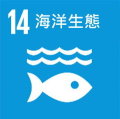
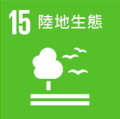
A-2 目的地管理組織.
目的地建立了工作職能部門、工作組或工作委員會等有效的組織體系,這些機構通過有效協調私營、公共部門攜手合作的方法與途徑來促進旅遊業永續發展。工作組應當與目的地規模相適應,並明確了其在環境、經濟、社會、文化等方面的管理職責、監管責任以及執行能力。工作組的活動經費應當有保障。
A2. Destination management organization
The destination has an effective organization, department, group, or committee responsible for a coordinated approach to sustainable tourism, with involvement by the private sector and public sector. This group is suited to the size and scale of the destination, and has defined responsibilities, oversight, and implementation capability for the management of environmental, economic, social, and cultural issues. This group’s activities are appropriately funded.
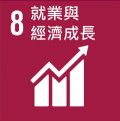



A-3 監測體系.
目的地針對環境、經濟、社會、文化、旅遊、人權等方面的事務建立了監測、公開報告、應對措施等綜合體系。同時,目的地應當對這些監測系統進行週期性的複審與評估。
A3. Monitoring
The destination has a system to monitor, publicly report, and respond to environmental, economic, social, cultural, tourism, and human rights issues. The monitoring system is reviewed and evaluated periodically.

A-4 旅遊季節性調控.
目的地動用多種手段並以適宜的方式來降低旅遊季節性波動,努力平衡當地經濟、社區、文化、環境等方面需求,並努力尋求不同季節的旅遊發展機會。
A4. Tourism seasonality management
The destination dedicates resources to mitigate seasonal variability of tourism where appropriate, working to balance the needs of the local economy, community, cultures and environment, to identify year-round tourism opportunities.
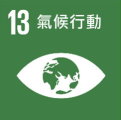
A-5 應對氣候變化.
目的地建立了能夠識別因氣候變化而帶來的風險與機遇的管理體系。該體系宣導目的地在專案開發、選址、設計以及管理等各個方面考慮了應對氣候變化的措施。該體系要求有助於實現目的地永續發展以及適應能力,並要求目的地向當地居民、遊客進行氣候方面的公共宣傳與教育。
A5. Climate change adaptation
The destination has a system to identify risks and opportunities associated with climate change. This system encourages climate change adaptation strategies for development, siting, design, and management of facilities. The system contributes to the sustainability and resilience of the destination and to public education on climate for both residents and tourists.



A-6 旅遊資源與景點普查與分類.
目的地應當對自然與文化景觀景點等方面的旅遊資源與景點進行普查、分類與評價;這些資訊應當及時更新,並供公眾查詢。
A6. Inventory of tourism assets and attractions
The destination has an up-to-date, publicly available inventory and assessment of its tourism assets and attractions, including natural and cultural sites.




A-7 規劃法規體制
目的地頒佈並實施了包括規劃指南、法規條例和/或方針政策在內的規劃法規體制,該體制應當展開環境、經濟、社會影響評估,並綜合考慮了土地使用、規劃設計、建築物拆除等方面的永續性。該體制旨在保護自然與文化資源,該體制在制訂過程中,應當吸納當地公眾意見以及通過全面評審,經歷了公眾諮詢等環節之後加以實施。
A7. Planning Regulations
The destination has planning guidelines, regulations and/or policies that require environmental, economic, and social impact assessment and integrate sustainable land use, design, construction, and demolition. The guidelines, regulations and/or policies are designed to protect natural and cultural resources, were created with local inputs from the public and a thorough review process, are publicly communicated, and are enforced.

A-8 滿足不同群體的可進入性
在一定前提條件下,目的地景點及其設施都應當向所有群體開放(景點包括具有重要自然與文化價值的景點;人群包括殘疾人以及其他有特殊需求的人)。一些無法直接進入的景點及其設施,應當通過妥善的設計以及實施方案來解決存在的可進入性的問題;該方案應當在維護景觀景點完整性的前提下,適度考慮遊客住宿等需求的供給條件。
A8. Access for all
Where appropriate, sites and facilities, including those of natural and cultural importance, are accessible to all, including persons with disabilities and others who have specific access requirements. Where such sites and facilities are not immediately accessible, access is afforded through the design and implementation of solutions that take into account both the integrity of the site and such reasonable accommodations for persons with access requirements as can be achieved.


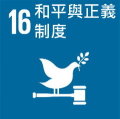
A-9 所有權的獲得與保障.
關於所有權使用方面的法律法規,在目的地被頒佈並得到了實施,這些法律法規應當遵循公眾以及原住民的權利,且進行了公眾諮詢,在他們沒有被事先告知、未徵求他們同意和/或他們沒有得到合理的補償的情況下,不允許對他們進行重新安置。
A9. Property acquisitions
Laws and regulations regarding property acquisitions exist, are enforced, comply with communal and indigenous rights, ensure public consultation, and do not authorize resettlement without prior informed consent and/or reasonable compensation.



A-10 遊客滿意度監測.
目的地建立了對遊客滿意度監測以及公開報告的機制,並視情開展相應行動來提升遊客滿意度。
A10. Visitor satisfaction
The destination has a system to monitor and publicly report visitor satisfaction, and, if necessary, to take action to improve visitor satisfaction.



A-11 永續發展標準化.
目的地建立了相應的機制來促進企業永續發展標準化,目的地所執行的永續發展標準應當與全球永續旅遊系列準則一致。目的地應向公眾揭露已通過永續發展認證或審核的企業名單。
A11. Sustainability standards
The destination has a system to promote sustainability standards for enterprises consistent with the GSTC Criteria. The destination makes publicly available a list of sustainability certified or verified enterprises.
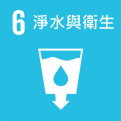






A-12 安全與安全保障體系.
目的地建立了應對犯罪、安全與健康危害等方面的機制,包括監測、預防、處置以及公開報告等方面的內容。
A12. Safety and security
The destination has a system to monitor, prevent, publicly report, and respond to crime, safety, and health hazards.

A-13 危機預防與應急管理.
目的地建立適當的危機預防與緊急事件應對計畫。該計畫中的重要內容需與社區居民、遊客以及企業單位進行有效溝通。該計畫要有明確的工作流程、實施步驟,以及針對員工、遊客、當地居民的教育培訓計畫及其相應的資源保障,該計畫應當根據外部環境、內部條件的變化而及時更新。
A13. Crisis and emergency management
The destination has a crisis and emergency response plan that is appropriate to the destination. Key elements are communicated to residents, visitors, and enterprises. The plan establishes procedures and provides resources and training for staff, visitors, and residents, and is updated on a regular basis.


A-14 行銷宣傳.
目的地關於永續發展的主張(要求)及其產品、服務等方面的行銷宣傳必須準確表達,這些行銷與宣傳資訊應當秉持誠信、尊重他人的原則與當地社區、遊客進行溝通。
A14. Promotion
Promotion is accurate with regard to the destination and its products, services, and sustainability claims. The promotional messages treat local communities and tourists authentically and respectfully.

B. 當地社區經濟利益最大化與負面影響最小化
SECTION B: MAXIMIZE ECONOMIC BENEFITS TO THE HOST COMMUNITY AND MINIMIZE NEGATIVE IMPACTS
B-1 經濟效益監測.
目的地至少每年開展一次旅遊業對目的地經濟的直接與間接貢獻方面的監測並向公眾公開。在條件允許情況下,監測物件應當包括遊客消費支出、平均可供出租客房收入、就業人數、投資成本與收益等方面的資料與資料。
B1. Economic monitoring
The direct and indirect economic contribution of tourism to the destination’s economy is monitored and publicly reported at least annually. To the extent feasible, this should include visitor expenditure, revenue per available room, employment and investment data.


B-2 居民就業機會.
目的地企業單位提供所有員工平等聘用與培訓機會,並提供可靠的職業安全保障以及合理的薪資。
B2. Local career opportunities
The destination’s enterprises provide equal employment, training opportunities, occupational safety, and fair wages for all.


B-3 公眾參與機制
目的地建立了鼓勵公眾持續地參與目的地規劃與決策的機制。
B3. Public participation
The destination has a system that encourages public participation in destination planning and decision making on an ongoing basis.



B-4 當地社區民意.
目的地即時監測、記錄並且公開報告當地社區對於目的地管理的期望值、關注度、滿意度。
B4. Local community opinion
Local communities’ aspirations, concerns, and satisfaction with destination management are regularly monitored, recorded and publicly reported in a timely manner.

B-5 當地居民的進入與訪問權利.
目的地監測、保護並視情恢復社區居民進入與訪問自然與文化景觀景點的權利。
B5. Local access
The destination monitors, protects, and when necessary rehabilitates or restores local community access to natural and cultural sites.



B-6 旅遊意識宣傳與教育.
目的地定期舉辦社區活動,提高居民對旅遊業存在的機遇與挑戰的認識,增強居民對永續發展重要性的理解。
B6. Tourism awareness and education
The destination provides regular programs to affected communities to enhance their understanding of the opportunities and challenges of tourism, and the importance of sustainability.
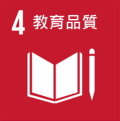


B-7 反對剝削.
目的地有制訂並實施了相關法律與慣例來防止商業剝削、性剝削或者其他形式的剝削、騷擾行為,尤其是制止對兒童、青少年、婦女、少數族裔的剝削、騷擾行為。這些法律與慣例應當經過公眾諮詢。
B7. Preventing exploitation
The destination has laws and established practices to prevent commercial, sexual, or any other form of exploitation and harassment of anyone, particularly of children, adolescents, women, and minorities. The laws and established practices are publicly communicated.



B-8 支持社區發展.
目的地提供便利條件,鼓勵企業單位、遊客、公眾積極參與社區活動、支持社區永續發展,並建立了相應的機制。
B8. Support for community
The destination has a system to enable and encourage enterprises, visitors, and the public to contribute to community and sustainability initiatives.
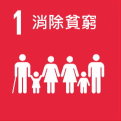






B-9 扶持當地企業主與支持公平貿易.
目的地應當著眼該地區的自然與文化資源,建立扶持當地企業、支援中小型企業發展的機制,開發與推廣具有地方特色的永續產品,促進公平貿易。永續產品包括食品、飲料、農產品、工藝品以及藝術表演等。
B9. Supporting local entrepreneurs and fair trade
The destination has a system that supports local and small-and medium-sized enterprises, and promotes and develops local sustainable products and fair trade principles that are based on the area’s nature and culture. These may include food and beverages, crafts, performance arts, agricultural products, etc.


C. 社區特色性保護、遊客體驗、文化傳承效益最大化與負面影響最小化
SECTION C: MAXIMIZE BENEFITS TO COMMUNITIES, VISITORS, AND CULTURE; MINIMIZE NEGATIVE IMPACTS
C-1 旅遊景點保護.
目的地制定了政策並建立了機制,鑒定評價、恢復(重建)、保育(保存)自然與文化景觀景點。這些場所包括(歷史的、考古的)建築遺產、鄉村風光、城市風情。
C1. Attraction protection
The destination has a policy and system to evaluate, rehabilitate, and conserve natural and cultural sites, including built heritage (historic and archaeological) and rural and urban scenic views.






C-2 遊客管理.
目的地制訂了旅遊景區景點的遊客管理制度,包括保存、保護自然與文化資源以及提升品質、提高價值等各種措施。
C2. Visitor management
The destination has a visitor management system for attraction sites that includes measures to preserve, protect, and enhance natural and cultural assets.



C-3 遊客行為指南.
目的地發佈並提供《敏感區域遊客行為指南》。該《指南》旨在減少敏感區域的負面影響,並強化遊客行為的正面影響。
C3. Visitor behavior
The destination has published and provided guidelines for proper visitor behavior at sensitive sites. Such guidelines are designed to minimize adverse impacts on sensitive sites and strengthen positive visitor behaviors.





C-4 文化遺產保護.
目的地制定了相關法律法規,對歷史與考古文物的出售、交易、展示或饋贈等方面的事務均進行了妥善管理。
C4. Cultural heritage protection
The destination has laws governing the proper sale, trade, display, or gifting of historical and archaeological artefacts.




C-5 景區景點解說.
目的地境內的自然與文化景區景點應當向遊客提供正確的、有適當文化內容的解說資訊。編寫這些資訊時,應當考慮到社區的共同合作,並考慮到以適宜的語言向不同來訪者進行有效的傳播。
C5. Site interpretation
Accurate interpretive information is provided at natural and cultural sites. The information is culturally appropriate, developed with community collaboration, and communicated in languages pertinent to visitors.




C-6 智慧財產權保護.
目的地建立了保護社區以及個人智慧財產權的體系。
C6. Intellectual property
The destination has a system to contribute to the protection and preservation of intellectual property rights of communities and individuals.

D. 環境效益最大化與負面影響最小化
SECTION D: MAXIMIZE BENEFITS TO THE ENVIRONMENT AND MINIMIZE NEGATIVE IMPACTS
D-1 環境風險評估與處置.
目的地對其所面臨的環境風險進行了識別與評估,並建立了相應的機制來應對和處置這些風險。
D1. Environmental risks
The destination has identified environmental risks and has a system in place to address them.





D-2 環境敏感區的保護.
目的地建立了旅遊業影響環境的監測機制,保護動物棲息地、動植物種群以及生態系統,並防止外來物種入侵。
D2. Protection of sensitive environments
The destination has a system to monitor the environmental impact of tourism, conserve habitats, species, and ecosystems, and prevent the introduction of invasive species.





D-3 野生物種保護.
目的地建立了機制,確保對野生動、植物進行捕獲或採集、展示、出售等行為必須遵守當地的、國家的以及國際層面上的法律與準則。
D3. Wildlife protection
The destination has a system to ensure compliance with local, national, and international laws and standards for the harvest or capture, display, and sale of wildlife (including plants and animals).



D-4 溫室氣體減排.
目的地建立了機制,鼓勵企業單位在其運營的各個環節進行計量、監測、公開報告溫室氣體排放量,並採取措施最大化減少、減緩其溫室氣體排放(包括來自於服務提供者的溫室氣體排放)。
D4. Greenhouse gas emissions
The destination has a system to encourage enterprises to measure, monitor, minimize, publicly report, and mitigate their greenhouse gas emissions from all aspects of their operation (including emissions from service providers).



D-5 節約能源.
目的地建立了相應的機制,鼓勵企業單位計量、監測、公開報告能源消耗量,不斷減少能源消耗以及減少對化石燃料的依賴度。
D5. Energy conservation
The destination has a system to encourage enterprises to measure, monitor, reduce, and publicly report energy consumption, and reduce reliance on fossil fuels.



D-6 水資源管理.
目的地建立了鼓勵企業單位計量、監測、公開報告並且不斷減少用水量的相關機制。
D6. Water management
The destination has a system to encourage enterprises to measure, monitor, reduce, and publicly report water usage.




D-7 用水供需保障.
目的地建立了水資源的監測機制,統籌兼顧企業單位的用水量與目的地社區的需水量之間的平衡。
D7. Water security.
The destination has a system to monitor its water resources to ensure that use by enterprises is compatible with the water requirements of the destination community.



D-8 水質監測.
目的地建立了機制,對飲用水、休閒療養用水的水質進行達標監測。目的地應當發佈水質監測報告,並且就監測報告中所反映的問題及時採取相應的處置措施。
D8. Water quality
The destination has a system to monitor drinking and recreational water quality using quality standards. The monitoring results are publicly available, and the destination has a system to respond in a timely manner to water quality issues.



D-9 廢水管理.
目的地清晰地確立了污水、排放物處理系統的選址、維護、檢測等方面的方針與準則,並強制實施這些方針與準則,確保污水得到了合理處置、再利用或實現了安全排放,確保對當地居民與環境的不利影響最小化。
D9. Wastewater
The destination has clear and enforced guidelines in place for the siting, maintenance and testing of discharge from septic tanks and wastewater treatment systems, and ensures wastes are properly treated and reused or released safely with minimal adverse effects to the local population and the environment.




D-10 固體廢棄物減排.
目的地鼓勵企業單位根據減量化、再利用、再回收(3R)原則處置固體廢棄物並建立了相應的機制。任何沒有被再利用或再回收利用的剩餘固體廢棄物,均要進行安全處置以及按照永續發展要求的方式進行妥善處理。
D10. Solid waste reduction
The destination has a system to encourage enterprises to reduce, reuse, and recycle solid waste. Any residual solid waste that is not reused or recycled is disposed of safely and sustainably.






D-11 噪音與光污染控制.
目的地制定了儘量減少噪音與光污染的方針與規範。目的地鼓勵企業單位遵循這些方針與規範。
D11. Light and noise pollution
The destination has guidelines and regulations to minimize light and noise pollution. The destination encourages enterprises to follow these guidelines and regulations.



D-12 降低交通運輸系統的負面影響.
目的地採取措施,推廣使用公共交通、動態交通(步行、騎行)等環境影響較小的交通運輸系統,並建立了相關機制。
D12. Low-impact transportation
The destination has a system to increase the use of low-impact transportation, including public transportation and active transportation (e.g., walking and cycling).



延伸閱讀:
澳洲生態標章獲得全球永續旅遊推動聯盟核可為國際永續旅遊標章-201508
本網誌「生態旅遊或觀光遊憩」專欄各文







